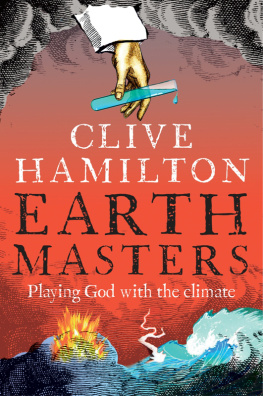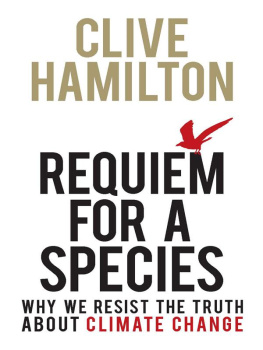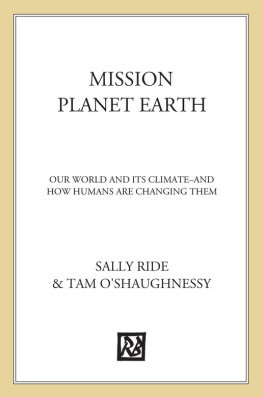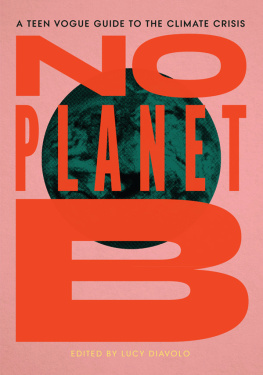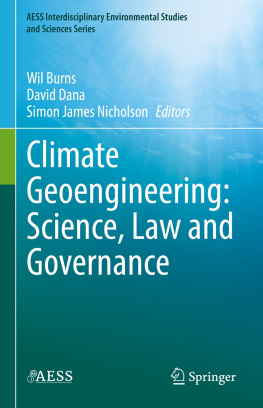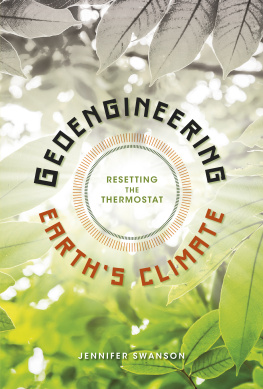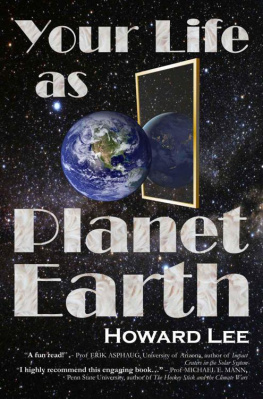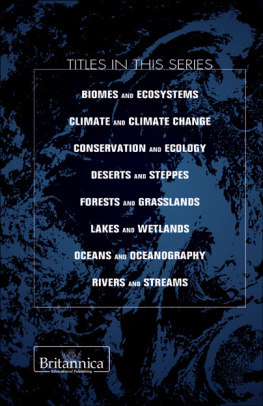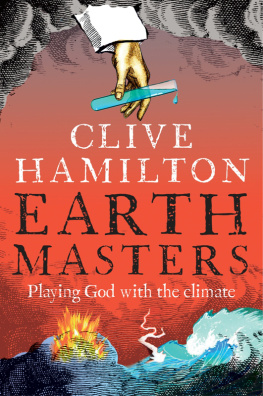

One of Australias leading thinkers, Clive Hamilton is author of the bestsellers Requiem for a Species, Affluenza and Growth Fetish. He is Vice-Chancellors Chair and Professor of Public Ethics at the Centre for Applied Philosophy and Public Ethics, Charles Sturt University.

I am in awe of what Clive Hamilton has done in Earthmasters. The man is a seer, not from dreams or mushrooms, but by force of an extraordinary intellect in full command of both climate science and geopolitical reality. More than merely an excellent treatment of the pros and cons of geoengineering schemes aimed at slowing climate change, Earthmasters examines the dawn of climate engineering as the perilous, ethically fraught final frontier in our species long drive to apply technology to control ever-more of the planet.
JAMES GUSTAVE SPETH, author of Red Sky at Morning: Americaand the Crisis of the Global Environment
Clive Hamilton is one of the worlds leading thinkers about the consequences and unsustainability of our hyper-consumption and materialism. His message is increasingly urgent and in Earthmasters, he clearly shows that we cannot expect megatechnological solutions to be problem-free when our ignorance of how the biosphere works is so great. The only thing we can manage is ourselves and we havent done a very good job of that.
DAVID SUZUKI, author of The Legacy
CLIVE
HAMILTON
EARTHMASTERS
Playing God with the climate

First published by Yale University Press in 2013
First published in Australia by Allen & Unwin in 2013
Copyright Clive Hamilton 2013
All rights reserved. No part of this book may be reproduced or transmitted in any form or by any means, electronic or mechanical, including photocopying, recording or by any information storage and retrieval system, without prior permission in writing from the publisher. The Australian Copyright Act 1968 (the Act) allows a maximum of one chapter or 10 per cent of this book, whichever is the greater, to be photocopied by any educational institution for its educational purposes provided that the educational institution (or body that administers it) has given a remuneration notice to Copyright Agency Limited (CAL) under the Act.
Allen & Unwin
83 Alexander Street
Crows Nest NSW 2065
Australia
Phone: (61 2) 8425 0100
Email: info@allenandunwin.com
Web: www.allenandunwin.com
Cataloguing-in-Publication details are available
from the National Library of Australia
www.trove.nla.gov.au
ISBN 978 1 74331 293 3
Printed and bound in Australia by McPhersons Printing Group
10 9 8 7 6 5 4 3 2 1

The time is coming when the struggle for dominion over the earth will be carried on. It will be carried on in the name of fundamental philosophical doctrines.
Friedrich Nietzsche, 1882
Contents
Acknowledgements
For sheer audacity, no plan by humans exceeds the one now being hatched to take control of the Earths climate. Yet it is audacity born of failure, a collective refusal to do what must be done to protect the Earth and ourselves from a future that promises to be nasty, brutish and hot. In my 2010 book Requiem for a Species: Why WeResist the Truth about Climate Change, I relied on the best science to set out that expected future. Even under optimistic assumptions about when the nations of the world will wake up to the danger and how quickly they will then respond, dramatic and long-lasting changes in the Earths climate now seem unavoidable.
The task of Requiem was to explain why we the rational animal have been unable to hear the insistent warnings of science academies around the world. It is into the yawning gap between the urgent response scientists say is needed and the timid measures governments are willing to take that geoengineering has stepped. Its promise seems irresistible it is cheap, effective and free of the unpalatable side-effects of carbon abatement, such as the wrath of fossil fuel corporations and the resentment of voters willing to make only symbolic changes to their ways.
Superficially, climate engineering (here synonymous with geoengineering) appears to be another application of human technological ingenuity; yet, I will suggest, it actually represents a profound change in the relationship of Homo sapiens to the Earth. In the twenty-first century the fate of nature has come to depend on the goodwill of humans, and to the extent that humans are part of nature the Earth system itself has acquired a moral force. So geoengineering is not just a technological problem, nor even an ethical one as usually understood; it goes to the heart of what it means for one species to hold the future of a planet in its hands. While most of this book is devoted to the who, what, why, where and when of geoengineering, I hope it will provoke the reader to reflect on a deeper question: What have we become?
When lay people write about science they had better get it right, especially in the case of climate science. So I am particularly grateful to the following scientists who have commented on all or parts of chapters 2 and 3: Graeme Pearman, Roger Gifford, Andrew Glikson, Tim Kruger, Phil Renforth, David Mitchell, Mike Raupach and Stephen Salter.
I am doubly grateful to Andrew Glikson for his very helpful commentary on other parts of the manuscript. Geoff Symons also provided useful suggestions. A reader invited by the publisher to comment provided sound advice on how to improve the book.
Will Steffen and Paul Crutzen provided valuable advice on the material in the last chapter, and Mark Lawrence helped me get the history right in the first chapter. Hugh Gusterson kindly commented on the Livermore story. Simon Terry and Pat Mooney provided important information on international negotiations. Clare Heyward challenged me to clarify and defend my views on ethics and Andrew Parker provided valuable background along the path.
Interactions over two years with fellow members of the Solar Radiation Management Governance Initiative (convened by the Royal Society, the academy of sciences for the developing world (TWAS) and the Environmental Defense Fund) have deepened my understanding of the issues considerably. The Royal Society in particular deserves our gratitude for taking the lead globally in investigating and reporting to the public on developments in geoengineering.
I thank them all but implicate none in the final product.
I am grateful to Julian Savulescu for inviting me to visit the Uehiro Centre for Practical Ethics at the University of Oxford, there to present a series of lectures on the subject of this book. My home institution, Charles Sturt University, provides generous support for my work.
I would like to dedicate this book to Joe Romm of Climate Progress for his indefatigable, comprehensive and committed reporting on the science and politics of climate change.
Next page
